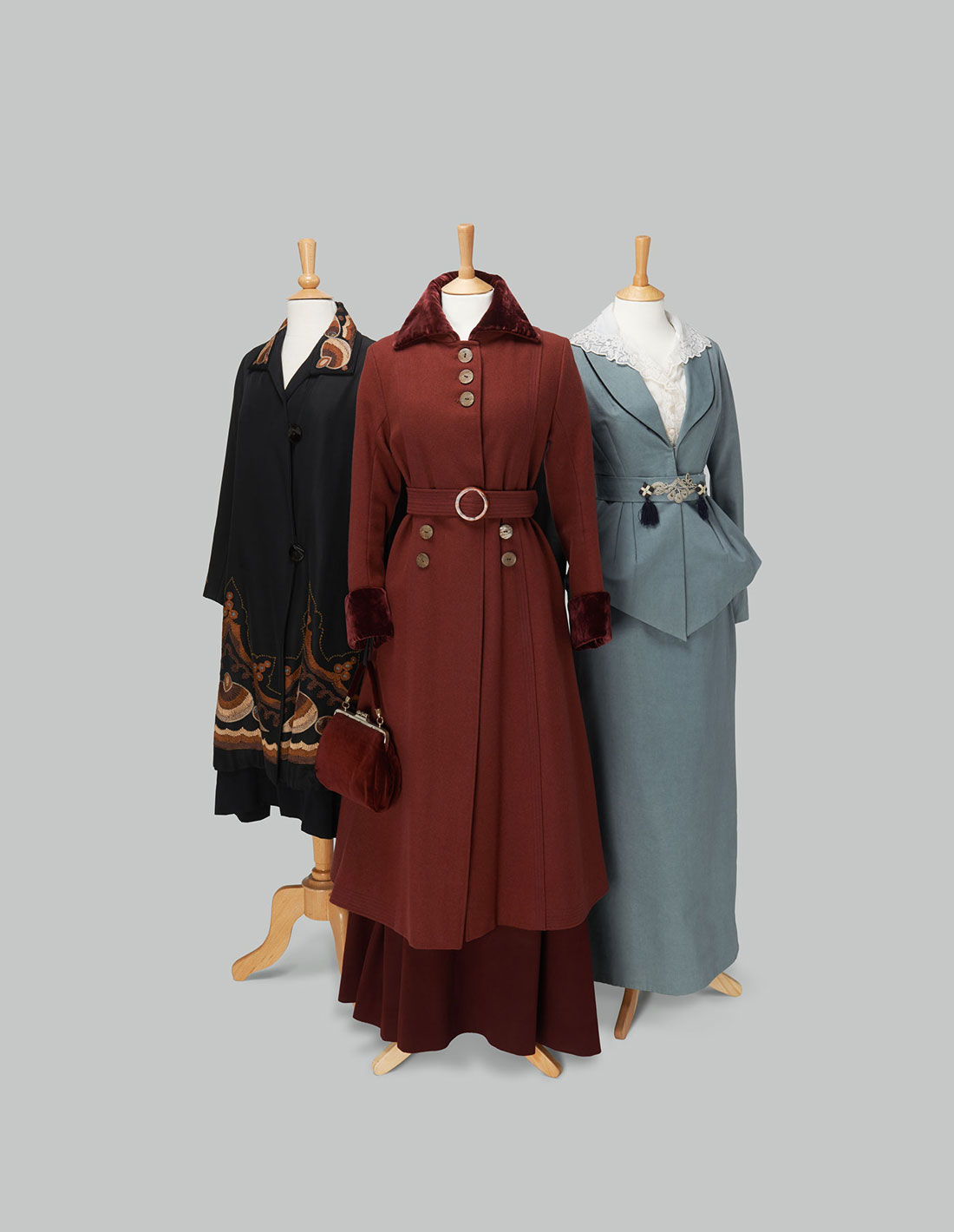By Alexandra Whittaker
A Downton Abbey costume exhibit opens at the Richard H. Driehaus Museum in downtown Chicago on February 9, putting looks from the hit TV show on public display for the first time in the Windy City.
“Dressing Downton: Changing Fashion for Changing Times” will run through May 8 and feature more than 35 costumes from the wildly popular British historical television drama. All costumes in the exhibit were worn on the show, which ended in December after six seasons. The traveling exhibit premiered in February 2015 at the Biltmore Estate in North Carolina. Guest curator Ruta Saliklis said the museum is expecting 30,000 people to visit Dressing Downton in Chicago. The exhibit will have a timed ticket, but prices have not yet been announced.
“I think it’ll be of interest not just for women who love fashion, but also people interested in that time period,” Saliklis said. “You’re talking about what’s going on with the British Isles or people in England who live in a country estate in 1912, and the differences between men and women in England in this time period.”
The Driehaus Museum, built in 1883 on East Erie Street, was once the home of the wealthy Nickerson and Fisher families of Chicago, who made their money in banking and paper businesses respectively. Instead of conventional museum galleries, the Driehaus uses the lavish home’s drawing rooms, living rooms, libraries and bedrooms as the backdrop for the costumes. The Nickerson and Fisher families were “kind of like “Downton’s” main characters] the Crawley,” said Saliklis.
“You’re seeing [the costumes] in a historic house and in an immersive environment, so you’ll see them in a library or an authentic dining room,” she said. “The furniture and the wallpaper and the tiles and the lighting fixtures and pianos and different things that the Driehaus has puts the costumes in context.”
The exhibit will match the “Downton” costumes to related rooms, with formal clothes displayed in the dining room and nighttime clothes in the bedroom.
“We don’t want to just put these dresses on a pedestal and have [them] in a plain white room,” Saliklis said. “Seeing it in a historic house like the Driehaus Museum will have its own appeal because people who go there really want to know what it was like for people during this time.”
Some of the costumes are actual garments from the early 1900s. “Downton Abbey” used real vintage clothing as well as specifically designed costumes, one reason that Jacqueline WayneGuite, fashion historian and collection manager of the Fashion Study Collection at Columbia College Chicago, said the show’s costumes were mostly historically accurate.
“I was pretty impressed that in the first few seasons, the female actresses were not allowed to wear any makeup on screen,” said WayneGuite. “But the show is still meant to be entertaining, and they did take a few artistic liberties from time to time.”

Original garments in the Dressing Downton exhibit include a 1920s silk-edged coat that Lady Edith Crawley wore in season three. Saliklis’s favorite, though, is a rose-colored 1920s flapper-style dress accented with metallic threads.
The elegant costumes helped “Downton Abbey” become a TV phenomenon, according to Dr. Sharon Ross, a television professor at Columbia College Chicago.
“A reason [the show] was received so well was that it was so beautifully done, both with costumes and masterful camera work. It’s stylish with a purpose, which critics love,” Ross said. “The costumes, the makeup and the hair are part of the appeal of the show. The costumes are beautiful, and on the show, you only get to see them for a little, so it makes sense to have an exhibit to see them more clearly.”
To make the museum experience more immersive, the Driehaus has created an additional exhibit on its third floor dedicated to photographs of Chicagoans from 1910 to 1921, the era of “Downton Abbey.”
“There’s a really interesting photograph of Babe Ruth, who was a New York Yankee in 1921, and he was playing the White Sox in Chicago,” Saliklis said. “The photos are still taking a historical angle like the fashion, but I think you can appreciate these things in the time period and culture.”
Chicagoans can experience a traditional English tea party while waiting to get into the exhibit. Tea specialists from the Let Us Entertain You catering company traveled to England to research 1900s tea and have put together a menu of historically accurate teas and snacks.
According to Ross, a costume exhibit based around the wardrobe of a television show is new and unique.
“I was surprised because I can’t remember seeing an exhibit dedicated to a TV show before,” Ross said. “It’s highly unusual for the costumes of an entire series to be treated with such reverence.”
The Richard H. Driehaus Museum
40 E Erie Street
Chicago, IL 60611
www.driehausmuseum.org
(312) 482-8933
Correction 2/11/2016. The original version of this article incorrectly stated that the “Dressing Downton” exhibit included costumes on public display for the first time. The costumes in “Dressing Downon” originally appeared at the Biltmore Estate in North Carolina in February 2015. Medill Reports regrets the error.


